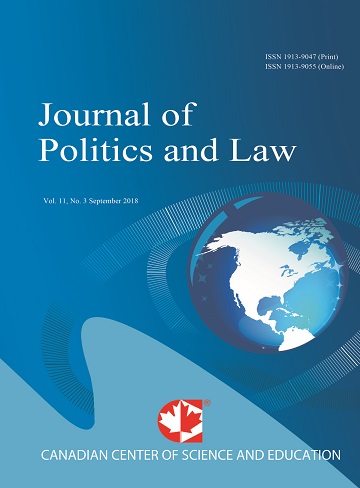Does the Commonwealth Electoral Act Satisfy the Requirement That Representatives Be ‘Directly Chosen’ by the People?
- Bede Harris
Abstract
The electoral system embodied in the Commonwealth Electoral Act 1918 (Cth) is notable for its startling unfairness to voters who support minor parties. This article argues that the disparity between voter preferences and the allocation of seats in the House of Representatives means that the electoral system cannot be said to provide for the election of members ‘directly chosen by the people’, as required by s 24 of the Constitution, and is therefore open to challenge. Although challenges to the electoral system in Attorney General (Cth); Ex rel McKinlay v Commonwealth and McGinty v Western Australia were unsuccessful, dicta by majorities in both cases support the argument that at some point – albeit unstated by the courts in those cases - an electoral system will be so unrepresentative as not to be consistent with s 24. Subsequent decisions in Roach v Electoral Commissioner and Rowe v Electoral Commissioner, to the effect that franchise laws must be appropriate and adapted to the system of representative government, also provide grounds for a constitutional challenge to the current electoral system. The article ends with a discussion of the criteria to be used to determine what system would be consistent with direct representation of the people, and argues that the Single Transferrable Vote system satisfies the requirements of accurate reflection of voter sentiment and provision to voters of identifiable local representatives.
- Full Text:
 PDF
PDF
- DOI:10.5539/jpl.v9n4p78
Journal Metrics
h-index (2017): 14
i10-index (2017): 39
h5-index (2017): 9
h5-median (2017): 11
Index
- Academic Journals Database
- ACNP
- ANVUR (Italian National Agency for the Evaluation of Universities and Research Institutes)
- Berkeley Library
- CNKI Scholar
- COPAC
- CrossRef
- DTU Library
- EBSCOhost
- Elektronische Zeitschriftenbibliothek (EZB)
- EuroPub Database
- Excellence in Research for Australia (ERA)
- Genamics JournalSeek
- GETIT@YALE (Yale University Library)
- Ghent University Library
- Google Scholar
- Harvard Library
- HeinOnline
- INDEX ISLAMICUS
- Infotrieve
- Jisc Library Hub Discover
- JournalGuide
- JournalTOCs
- LOCKSS
- MIAR
- Mir@bel
- NewJour
- Norwegian Centre for Research Data (NSD)
- Open J-Gate
- PKP Open Archives Harvester
- Publons
- Pubmed journal list
- RePEc
- ROAD
- Scilit
- SHERPA/RoMEO
- Standard Periodical Directory
- Stanford Libraries
- UCR Library
- Ulrich's
- UniCat
- Universe Digital Library
- UoS Library
- WorldCat
- Zeitschriften Daten Bank (ZDB)
Contact
- William TaiEditorial Assistant
- jpl@ccsenet.org
